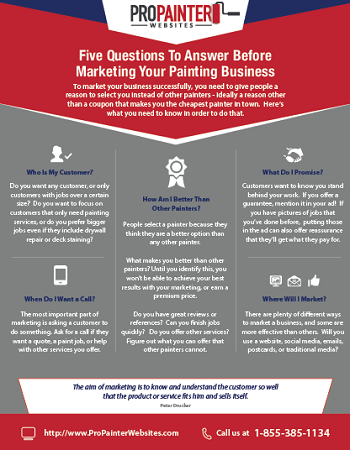Check Out The Influence Of Seasonal Aspects On The Efficiency Of Industrial Exterior Painting And Determine The Optimal Times To Achieve Long-Lasting Results For Your Project
Check Out The Influence Of Seasonal Aspects On The Efficiency Of Industrial Exterior Painting And Determine The Optimal Times To Achieve Long-Lasting Results For Your Project
Blog Article
Created By-Regan Rodriquez
When you're planning a business exterior paint job, seasonal elements can make or break your outcomes. You'll wish to take into consideration exactly how temperature and humidity effect paint application and drying out times. Choosing the appropriate period can ensure your paint sticks appropriately and lasts much longer. However which seasons are absolutely the best for this sort of job? Let' professional painters plymouth out the key elements that can influence your project's success.
The Effect of Temperature on Paint Application
When you're planning a business exterior painting job, the temperature can significantly impact how well the paint adheres and dries.
Ideally, you wish to paint when temperature levels range in between 50 ° F and 85 ° F. If it's also cold, the paint may not cure correctly, resulting in concerns like peeling off or breaking.
On the other hand, if it's also warm, the paint can dry out too rapidly, protecting against correct adhesion and resulting in an irregular surface.
You need to also consider the moment of day; early morning or late afternoon uses cooler temperatures, which can be extra positive.
Constantly check the supplier's suggestions for the particular paint you're making use of, as they usually provide advice on the perfect temperature level array for optimum results.
Moisture and Its Effect on Drying Times
Temperature isn't the only environmental element that affects your industrial exterior paint project; moisture plays a substantial function too. High moisture degrees can decrease drying out times dramatically, impacting the overall quality of your paint work.
When the air is filled with moisture, the paint takes longer to cure, which can lead to problems like inadequate attachment and a higher danger of mildew development. If you're repainting on an especially humid day, be prepared for extended wait times between layers.
It's critical to check local weather and plan accordingly. Preferably, aim for humidity degrees between 40% and 70% for ideal drying out.
Keeping these factors in mind guarantees your job remains on track and delivers a long-term coating.
Best Seasons for Commercial Outside Paint Projects
What's the most effective season for your commercial outside paint tasks?
Springtime and early fall are generally your best bets. Throughout these periods, temperatures are light, and moisture levels are commonly lower, creating excellent conditions for paint application and drying.
Stay clear of summer season's intense heat, which can trigger paint to dry as well promptly, resulting in bad adhesion and coating. Similarly, https://painternearme72603.blogproducer.com/41382400/pro-tips-for-an-unified-working-relationship-with-house-painting-specialists can hinder appropriate drying and healing, risking the durability of your paint job.
Aim for days with temperature levels between 50 ° F and 85 ° F for ideal results. Remember to inspect the regional weather forecast for rainfall, as wet conditions can destroy your project.
Planning around these factors guarantees your painting project runs smoothly and lasts longer.
Conclusion
In conclusion, preparing your commercial external paint projects around seasonal considerations can make a considerable difference in the end result. By scheduling work during the ideal temperatures and humidity levels, you'll guarantee far better bond and drying out times. Remember to keep Discover More Here on neighborhood weather prediction and select the right time of year-- spring and early fall are your best options. Taking these actions will certainly help you achieve a long lasting and specialist coating that lasts.
